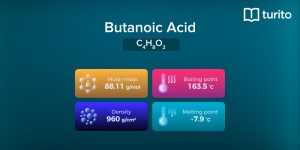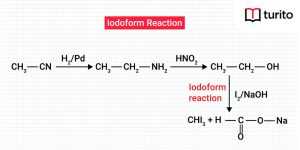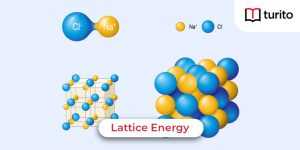Chemical Equation
This article is all about what is a chemical equation, the way of writing a chemical equation, and its advantages.
When a matter undergoes any chemical change, a chemical reaction takes place. Similar to the Law of Mass Action, during a chemical reaction, atoms of various elements transfer from before reacting state to after reacting state.
But, there are many chemical reactions and more than 100 atoms in Chemistry that show chemical reactions. Not only atoms but there are also so many compounds that undergo chemical changes. So, it is always convenient to write their reactions in words. Therefore, scientists have designed chemical equations.
What is a Chemical Equation?
Chemical equations acclimated to represent chemical reactions. Writing a chemical reaction using symbols and formulae in a transcripted way to represent a chemical reaction – that’s what a chemical equation is called.
The symbols and formulae of the substances, i.e., elements or compounds, are arranged to constitute the products and reactants of a chemical reaction.
Let’s take an example to understand the precise meaning clearly.
Zinc metal combines with dilute sulphuric acid to form hydrogen gas and zinc sulphate. Writing this reaction in words,
Zinc + dilute Sulphuric acid → Hydrogen + Zinc sulphate.
Now, using symbols and formulae,
The symbol for zinc metal is Zn (s).
The formula for dilute sulphuric acid is dil. H2SO4.
The formula for zinc sulphate is ZnSO4.
The formula for hydrogen is H2.
Now put these symbols and formulae in their places according to the chemical reaction mentioned above.
Zn + dil. H2SO4 → ZnSO4 + H2
Such representation is called a chemical equation.
What are Reactants and Products?
The substances that combine or react are known as reactants. For example, in the above chemical equation, zinc metal and dilute sulphuric acid are the entities known as reactants. The reactants are consistently written on the left-hand side of an equation.
The substances that are formed or produced are known as products. For example, zinc sulphate and hydrogen are produced in the above chemical equation, hence, are known as products. The products are consistently written on the right-hand side of an equation.
The arrow sign (→) pointing towards the right-hand side is used to separate reactants and products. This arrow indicates that entities on its left-hand side combine to give the entities on its right-hand side.
Hence, it is correct to say that a chemical equation is a shorthand method of representing a chemical reaction.
Some Chemical Equation Examples
Some generally known chemical equation examples are:
2H2 + O2 → 2H2O
Here, two moles of hydrogen react with one mole of oxygen, giving two moles of water as a product.
C + O2 → CO2
Here, carbon combines with oxygen, giving carbon dioxide.
Ca(OH)2 + CO2 → CaCO3 + H2O
One mole of calcium hydroxide (lime water) reacts with one mole of carbon dioxide, giving calcium carbonate (insoluble product) and water.
Some other examples are:
N2 + O2 → 2NO
2CO + O2 → 2CO2
2Mg + O2 → 2MgO
2Fe + 3Cl2 → 2FeCl3
2Al + 3Cl2 → 2AlCl3
There are many more chemical equations in Chemistry.
What are Balanced and Unbalanced Chemical Equations?
Equalling the number of different atoms on each side of an equation is known as the balancing of the equation. And such equations that follow this balancing order are called balanced chemical equations.
An unbalanced chemical equation has an uneven number of atoms of one or more elements in the products and reactants. In other words, an unbalanced equation has an unequal number of atoms of one or more elements on its two sides.
For instance,
For a chemical equation, Al(OH)3→ Al2O3 + H2O
| In reactants | In products | |
| No. of Al atoms | 1 | 2 |
| No. of H atoms | 3 | 2 |
| No. of O atoms | 3 | 4 |
Hence, it is an unbalanced chemical equation.
Now, after balancing the reactants and products,
2Al(OH)3 → Al2O3+ 3H2O
| In reactants | In products | |
| No. of Al atoms | 2 | 2 |
| No. of H atoms | 6 | 6 |
| No. of O atoms | 6 | 6 |
It is an example of a balanced chemical equation.
How to Balance Chemical Equations?
The simple equations are balanced by the hit-and-trial method. The steps to write the balanced equations are:
Step 1: Write down the chemical reaction in the form of a word equation, keeping the reactants and products in their left-hand or right-hand place.
Step 2: Put the reactants, products’ symbols, and formulae in the word equation.
Step 3: Balance the equation by multiplying the symbols and formulae by the least possible figures.
Step 4: Make the equation more informative by adding various parameters.
What are Ionic Equations?
An equation that shows only the atoms and ions that take part in the reaction is called an ionic equation. For instance,
When zinc metal and dilute sulphuric acid react to give zinc sulphate and hydrogen gas.
The chemical equation for this reaction is
Zn + H2SO4 → ZnSO4 + H2
The ionic equation for this reaction will be
Zn + 2H+ → Zn+2 + H2
The ionic equation shows only those substances that participate in the chemical reaction.
How to Balance Ionic Equations?
An ionic equation is balanced concerning the number of atoms or ions and the number of charges on the ions. Hence, the steps to balance ionic equations are:
Step 1: Write the chemical equation in the unbalanced ionic form.
Step 2: Balance the number of atoms or ions on both sides of the equation.
Step 3: Make the charges of ions equal on both sides of the equation.
To Make Equations More Informative
A chemical equation is the abbreviated form of a chemical reaction. To make a chemical reaction handy chemical equations are designed. On top of it, if your chemical equation becomes more informative or information-giving, you can use the following abbreviated forms:
- Most elements participating in reactions occur in solid, aqueous solution, liquid, or gaseous states. To stipulate the physical state of the products and reactants, use letters (s), (aq), (l), and (g), respectively, after each of the reactant and product. These symbols are called ‘state symbols.’
- If any catalyst, inhibitor, or activator participates during a reaction, write their symbol or formulae above or below the arrow between products and reactants.
- Write ‘+ Heat’ or ‘+ Δ’ on the left-hand of the arrow in the case of endothermic reactions. While in the case of exothermic reactions, write them on the right-hand side of the arrow.
- Use (↑) if gas is released during the reaction and (↓) if any insoluble compound or precipitate is formed.
- In the case of reversible reactions, use (⇄) arrows instead of a single arrow. While in the case of equilibrium conditions, use (⇌) arrows.
- If the reaction goes backward, use (←) instead of (→). And to represent stoichiometry relationships, use (=).
- In case of strong or concentrated acid or base, write (cont.) before acid or base; if it is diluted, write (dil.) before it.
Conclusion
In simple words, what are chemical equations? The symbolic representation of a chemical reaction is in the form of symbols and formulae, where the reactants are placed on the left-hand side and the products on the right-hand side.
Because of their handy nature, chemists use chemical equations quite frequently.
Frequently Asked Questions
Q1. What does a chemical equation represent?
Answer: A chemical equation is a symbolic depiction of a chemical reaction. What you have before the reaction is listed, then an arrow is drawn, and then a list of what you have after the reaction is made.
These equations are descriptive but in an abbreviated manner.
When combining these equations with the law of mass conservation and inconvertibility of the elements, many calculations are needed to determine how given entities react to form product(s), how to start the reaction with reactants, how much product will form, etc.
Q2. Why is it useful to write the chemical equation?
Answer: Chemical equations speak for the products of the reactions and how they are formed. They are useful for predicting the products of a reaction. They are also called abbreviated structural formulae.
A properly-stabilized chemical equation exhibits how chemical groups regroup during a reaction and how many atoms or ions are involved. It becomes essential when moving on to calculating reaction features such as energy absorption or release.
Q3. What are chemical equations’ advantages?
Answer: A chemical equation is a shortest and most precise way of expressing a reaction. It gives a lot of information like:
- It tells about the quality and quantity of reactants and products involved in the chemical reaction.
- A single arrow between the reactants and products tells us that the reaction goes in the forward direction. In contrast, a double arrow shows that it is a reversible reaction.
- A steady reaction gives the number of products and reactants. You can use these proportions to measure the exact quantity of reactants.
- You can predict the exact amount of products formed in the reaction before starting the process.
- A reaction, written in detail, also informs us about the physical state of the products and reactants. Similarly, the heat changes required in chemical reactions are also mentioned in the chemical equations.

Relevant Articles
Butanoic Acid – Structure, Properties, Uses
Butanoic Acid The carboxylic acid, butanoic acid, has the structural …
Butanoic Acid – Structure, Properties, Uses Read More »
Read More >>What is Iodoform? Characteristics and Uses
Iodoform The formula for Iodoform is CHI3. It is biotic …
What is Iodoform? Characteristics and Uses Read More »
Read More >>Lattice Energy – Explanation, Factors & Formulas
Lattice Energy Lattice energy evaluates the intensity of the ionic …
Lattice Energy – Explanation, Factors & Formulas Read More »
Read More >>Lead Acetate – Definition, Properties, Uses
Lead Acetate Have you ever licked lipstick when you sketch …
Lead Acetate – Definition, Properties, Uses Read More »
Read More >>




















Comments: